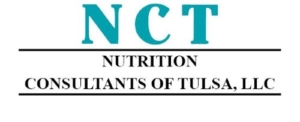Beyond the Buzz
SPECIAL FEATURE
Eating wheat packs on the pounds?
“Lose the wheat, lose the weight, and find your path back to health,” proclaims cardiologist William Davis in his best-selling book, Wheat Belly.
Wheat consumption and obesity rates have increased in the United States since the mid- 1980s, as Davis notes. We’re also eating more calories now, although wheat—along with sugars, fats, and oils—accounts for much of the increase.
And cutting bread, bagels, pasta, tortillas, piz- za crust, muffins, pancakes, crackers, croissants, cereal, cookies, cakes, doughnuts, pies, pita chips, pretzels, and dozens of other wheat foods out of your diet would certainly make a dent in your weight…assuming you didn’t replace their calories with calories from other foods.
However, no good studies have tested whether wheatless diets are any better for losing weight—or keeping weight off—than other popular weight-loss diets.
The truth is that you can lose weight on just about any diet that cuts calories. Unfortunately, after six months or a year, most people begin to regain the weight they lost, no matter which foods they cut to lose the weight.1
“What we’re really interested in is a scenario that helps you lose weight and keep it off in the long term,” says Julie Jones, professor of foods and nutrition at St. Catherine University in Saint Paul, Minnesota. And there’s no good evidence that slashing carbs helps you do that.
“Avoiding wheat isn’t the answer,” says Jones, who recently reviewed the evidence for many of Wheat Belly’s claims.2
Some people—those who have celiac disease or gluten intolerance—need to avoid wheat. “But don’t do it to lose weight,” says Jones. “This, like the rest of all fad diets, will run its course.”
Bottom Line: Unless you cut calories, eliminating wheat won’t help you lose weight or keep
it off.
1 N. Engl. J. Med. 360: 859. 2009.
2 Cereal Foods World 57: 177, 2012.
Dairy foods cause ovarian cancer?
“Milk linked to ovarian cancer,” reported CBS News in 2004.
Dairy foods—especially low-fat milk, yogurt, and cheese—supply calcium and vitamin D for bones and may protect against colorectal cancer and high blood pressure.1 So how did dairy get a bad rap when it comes to the seventh leading cause of cancer deaths among women worldwide?
In 1989, a study reported that women with ovarian cancer were more likely to say that they ate foods that were higher in lactose, the naturally occurring sugar in milk.2
But having a disease can color what people remember eating. To avoid that possible bias, researchers pooled the data from 12 studies that asked more than half a million healthy women what they ate and then fol- lowed them for the next 7 to 20 years.
Women who consumed the most milk, cheese, yogurt, and ice cream were no more likely to be diagnosed with ovarian cancer than those who ate the least. However, the researchers found a “weak” (their word) 19 per- cent increased risk in women who consumed at least 30 grams of lactose per day.3
To get 30 grams, you’d need to consume roughly 21?2 cups of milk, 2 cups of yogurt, 3 cups of ice cream, greek yogurt, or cottage cheese, or 27 pounds of cheddar.
How might lactose raise the risk of ovarian cancer if dairy doesn’t?
It’s not clear. Could dairy foods have some other nutrients that lower risk and counteract the lactose? Could genes play a role? Or could the “weak” link simply be due to chance?
“If there is an increased risk of ovarian cancer, it’s only at very high intakes of lactose,” says Shelley Tworoger, an ovarian cancer re- searcher at Harvard University. “Even then, it was still a relatively modest association.”
In 2007, the World Cancer Research Fund and the American Institute for Cancer Research declared that there
Only “weak” evidence links large amounts of lac- tose to ovarian cancer.
wasn’t enough evidence to reach a conclusion about dairy’s effect on the risk of ovarian cancer.
So what does increase risk? A family history of ovarian cancer, having used hormone therapy, or never having been pregnant. So may excess weight. (Oral contraceptive use can lower risk, notes Tworoger.)
One of the reasons the survival rate for ovarian cancer is so low: the disease often causes no noticeable symptoms until it has spread to a dis- tant site, when the five-year survival rate drops to only about 27 percent.
But new advances to detect the cancer early may be coming.
In January, researchers at Johns Hopkins University in Baltimore found that PAP smears, which are routine screening tests for cervical cancer, could detect telltale DNA from endometrial and ovarian cancers as well.4
“There’s a lot of potential, but more work needs to be done to understand if we can use this to identify tumors in healthy women that you wouldn’t otherwise be able to identify,” says Tworoger.
Bottom Line: There’s only weak evidence that large amounts of lactose (equal to what you’d get in 2 1/2 glasses of milk) increase the risk of ovarian cancer.
1 Br. J. Nutr. 96 Suppl. 1: S94, 2006.
2 Lancet 2: 66, 1989.
3 Cancer Epidemiol. Biomarkers Prev. 15: 364, 2006. 4 Sci. Transl. Med. 5: 167, 2013.
NUTRITION ACTION HEALTHLETTER n JUNE 2013 11
